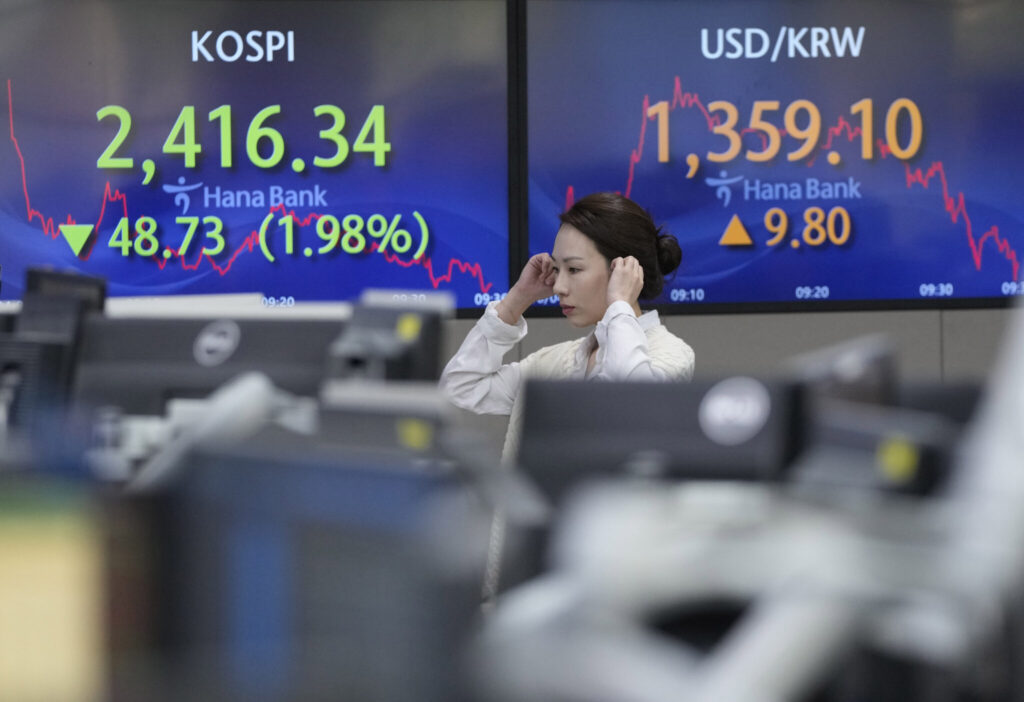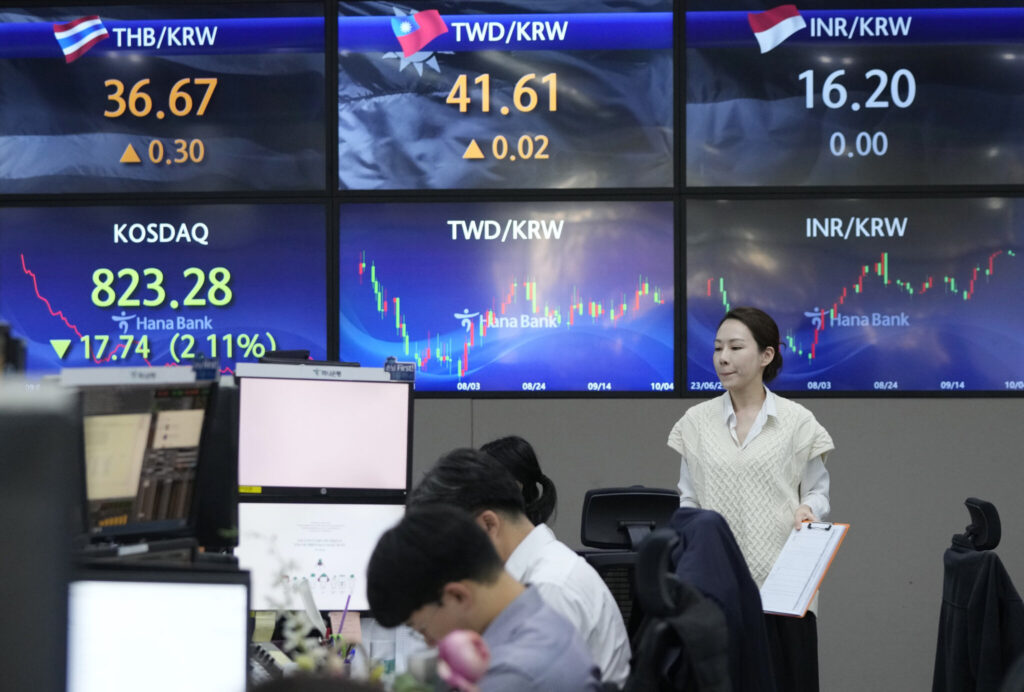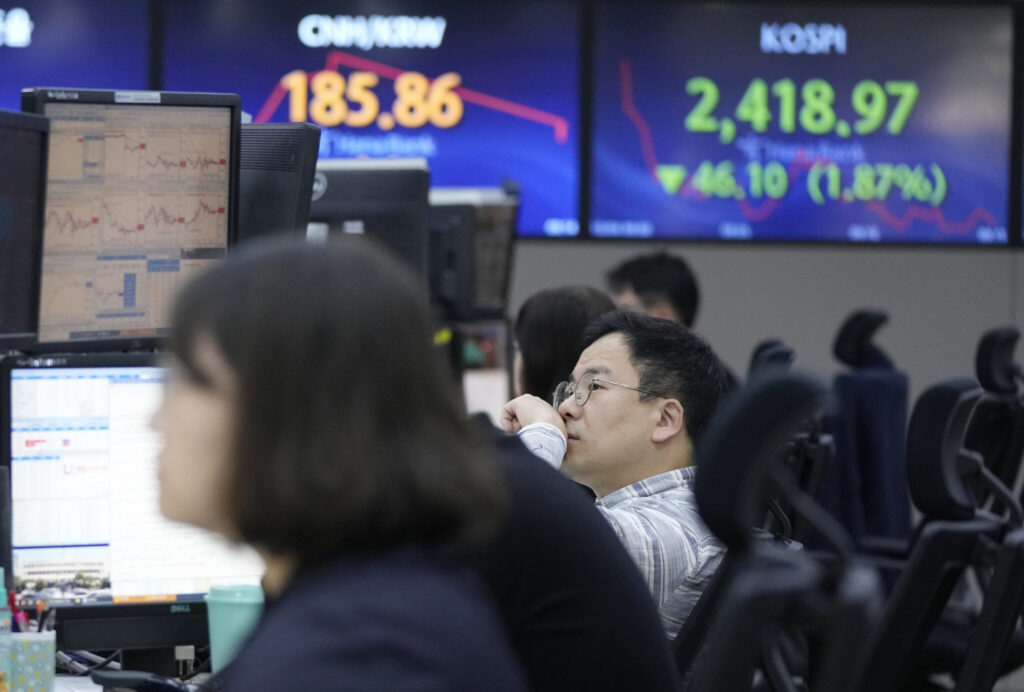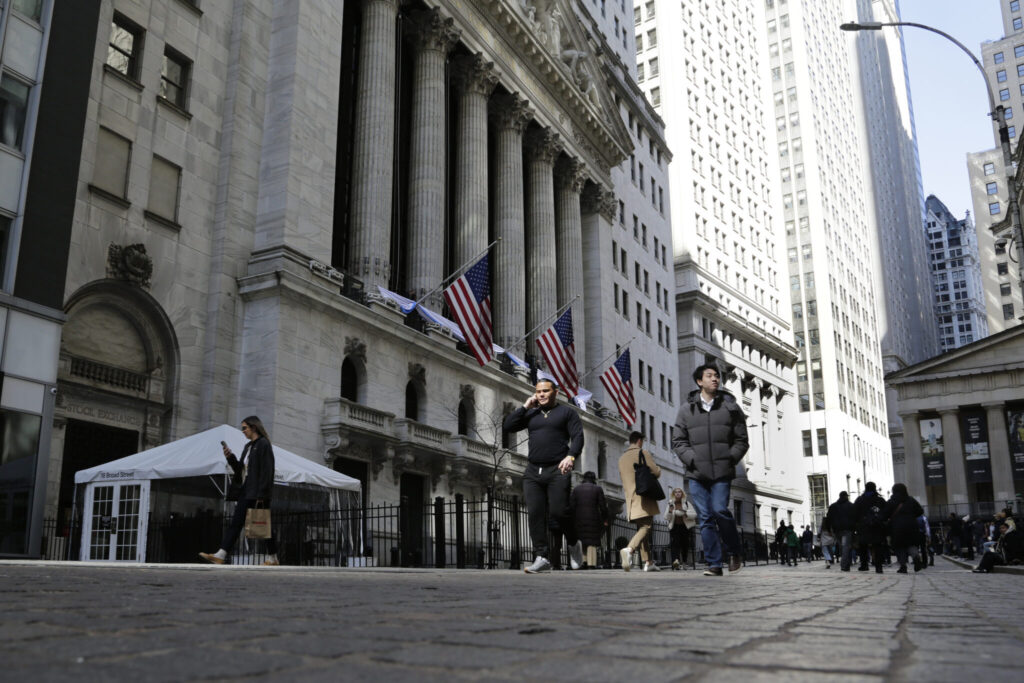Wall Street shifted toward gains before the opening bell Wednesday, a day after rising bond yields pressured stocks and dragged down the technology sector. Futures for the Dow Jones industrials and the S&P 500 each ticked up 0.2%.
The Associated Press has the story:
Wall Street futures rise as yields stabilize, oil prices slide
Newslooks- NEW YORK (AP)
Wall Street shifted toward gains before the opening bell Wednesday, a day after rising bond yields pressured stocks and dragged down the technology sector.
Futures for the Dow Jones industrials and the S&P 500 each ticked up 0.2%.
Bond yields stabilized somewhat overnight, with the 2-year Treasury retreating to 5.11% from 5.15% late Tuesday. The 10-year followed suit, falling to 4.75% from 4.80% after touching its highest level since 2007.
When bonds are paying so much more in interest, they pull dollars away from stocks and other investments prone to bigger price swings than bonds. High yields also make borrowing more expensive for companies and households across the economy, which can hurt corporate profits.

In addition to the pressure from the bond market, a report Tuesday showing that U.S. employers have many more job openings than forecast helped to drag down markets. A resilient U.S. labor market has fortified expectations that the U.S. Federal Reserve will keep interest rates elevated for an extended period of time.
And despite an announcement from Saudi Arabia on Wednesday that it would maintain production cuts through the end of the year, crude prices slid.
A barrel of benchmark U.S. crude lost $1.66 to $87.57 per barrel in electronic trading on the New York Mercantile Exchange right after Saudi made its announcement. It rose 41 cents to settle at $89.23 on Tuesday. Brent crude, the international standard, gave up $1.55 to $89.37 per barrel.
Production cuts first announced by Saudi Arabia and Russia in July have driven up prices at the pump, enriched Moscow’s war chest and complicated global efforts to bring down inflation.

In premarket trading Wednesday, egg producer Cal-Maine tumbled nearly 12% after it badly missed Wall Street’s profit targets. Cal-Maine posted profit of just 2 cents per share in its first quarter, a far cry from the $2.57 per-share profit it enjoyed in the same period a year ago as egg prices soared.
In Europe at midday, Germany’s DAX rose 0.2%, Paris’s CAC 40 was up 0.2% and Britain’s FTSE 100 lost 0.5%.
In Asian trading, Tokyo’s Nikkei 225 index sank 2.3% to 30,526.88 and the Kospi in South Korea dropped 2.4% to 2,405.69.
Hong Kong’s Hang Seng skidded 0.8% to 17,195.84. Troubled property developer China Evergrande was down 12.2% after plunging 28% on Tuesday.
Australia’s S&P/ASX 200 shed 0.8% to 6,890.20. In Bangkok, the SET recovered from early losses, gaining 0.3%.
Investors increasingly are taking the Federal Reserve at its word that it will keep its main interest rate high for a long time in order to drive down inflation. The Fed has already yanked its federal funds rate to the highest level since 2001, and it indicated last month it may keep the rate higher in 2024 than it earlier expected.

The dollar declined to 148.92 Japanese yen from 149.04 yen. The yen’s weakness against the dollar has drawn protests from Japanese officials, and analysts said they believed regulators had intervened Tuesday to prevent the dollar from surpassing the 150 yen level.
The government did not confirm if it had acted to support the yen. However, Japanese Finance Minister Shunichi Suzuki told reporters that rapid currency moves were “undesirable.” He said Japan was prepared to respond appropriately, with “all options on the table.”
The euro rose to $1.0515 from $1.0468.
On Tuesday, the S&P 500 lost 1.4%. The Dow sank 1.3% and the Nasdaq composite led the market lower with a 1.9% drop. Big Tech stocks were among the market’s biggest losers.
Amazon fell 3.7%, Microsoft dropped 2.6% and Nvidia lost 2.8%.







